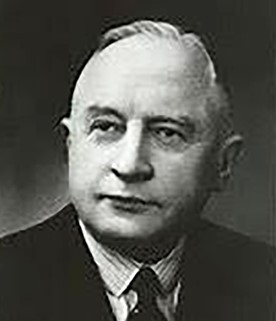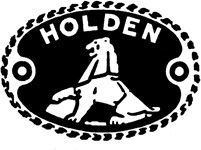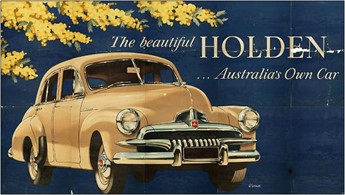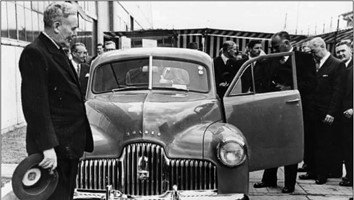by Graham McDonald

Holden is no more: General Motors announces the 164-year-old Aussie auto brand will be axed by the end of the year.
– Business Insider Australia, 17 February 2020
This announcement caused shock waves throughout Australia as so many of the population had grown up with the Holden brand. This was a sad ending, considering the incredible efforts of ingenuity and hard work by Sir Henry James Holden to establish the company that would grow to be the biggest automotive body builder in the British Empire by 1929.

But in October 1929, the factory closed temporarily for lack of continuous work. Henry Holden knew he needed to develop the business in a new direction, and in January 1930, he set out for the United States to discuss amalgamation with General Motors. These discussions were finalised in 1931, and Henry came back home to begin developing Australia’s own Holden car.
The first ‘home-grown’ Holden model, the 48-215 (also affectionately known as the ‘FX Holden’), rolled off the assembly line at Fishermans Bend Factory in Melbourne on 29 November 1948 and was unveiled by the then Prime Minister, Ben Chifley.
The FX was a strong and economical family sedan, designed especially for the Australian environment. The price was set at $733 including tax, which equalled 94 weeks of wages for the average worker at the time. Despite this, the car was an instant success and Holden could not satisfy demand quickly enough. 18,000 people immediately signed up and paid their deposit without even seeing the car.
By 1958, Holden had captured more than 40 per cent of total car sales in Australia. By 1962, one million Holdens had been sold and, despite strong market competition from the Ford Falcon, another million cars were sold by 1966.

So how was it that Henry Holden got started in this business?
After gaining experience in his father’s leather and saddlery business, Henry went on to become a carriage-builder.
During the South African War (also called the Boer War), Henry was contracted by the government to provide a large number of saddles. He was very mechanically talented, and to help meet this large demand he set up rows of machinery in a rented shed, personally trained the workforce, and developed large-scale, low-cost production methods.
In 1909, Holden extended his company’s activities to include motor-body trimming. This was in the time when both carriages and early motor vehicles were being used for transport, so his company produced hoods, upholstery and hardware for carriages, and painted bodies for steam and petrol cars.

As well as being a clever manufacturer and businessman, Holden was a kind and caring employer. He had a close and protective relationship with his workforce. He made sure there were generous social welfare arrangements made for his staff and worked hard to maintain good labour relations, working with a special council set up so that he could consult with the workers about their needs and working conditions.
As well as being a leading industrialist, Henry Holden contributed substantially to public community life. He was Mayor of Kensington and Norwood for eight years, was a member of the Norwood School Board, and as a foundation member of the Municipal Tramways Trust, he initiated the process of electrifying the tram system.
What gave Henry Holden the desire to serve his community in so many ways?
Holden’s commitment to the teachings of Jesus were evident throughout his lifetime as he embraced the opportunity to serve not only his own workers but those in the wider community. He was President of the Baptist Union for twenty-one years, was a church Deacon for twenty-five years, and was also a Sunday School Superintendent.

His concern for the poor and elderly moved him to establish the Norwood Homes in 1904. His concern for the wellbeing of young men caused him to support the Young Men’s Christian Association (YMCA), a national body concerned with the welfare of 15–25-year-old males, by being its President.
He also expressed great concern for those suffering from mental illness. He was an official visitor to the Parkside Asylum (a facility caring for people with mental illness and disability), and this no doubt prompted him to accept the job of investigating the management of hospitals for those with mental disabilities while he visited England in 1911.
Henry Holden died on 6 March 1926, survived by his wife, three daughters and two sons. One of Henry’s daughters, Nancy, became South Australia’s first female senator in Federal Parliament. One of his sons, Edward, continued the Holden family’s involvement in vehicle manufacturing.
With their talents in manufacturing and business, and Henry’s legacy of Christian compassion and public-spirited service, the Holden family made a significant and positive contribution to the development of Australian industry and society.
Source:
https://motor.history.sa.gov.au/research-types/the-holden-company-in-australia/
